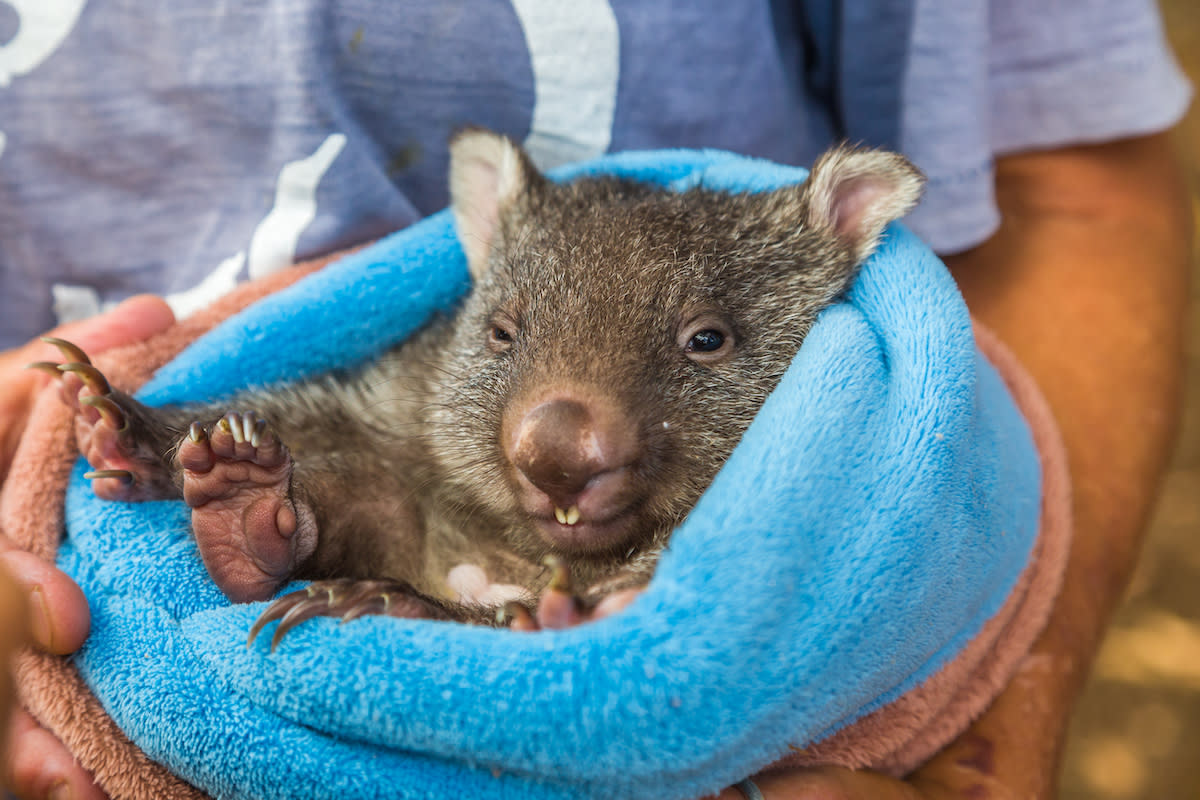Orphaned Baby Wombat Snuggling in Manmade 'Pouch' Will Melt Anyone's Heart

When orphaned baby animals arrive at a rescue, the race is on to try to recreate the comfort they should have been receiving from their animal mother. Sometimes that is making a baby formula specially designed to meet their peculiar dietary needs. Sometimes that means building a den or a nest that the baby will find familiar. And sometimes—in the case of a marsupial like this adorable baby wombat, it means creating a manmade pouch.
View the original article to see embedded media.
April is a baby wombat being cared for by a Wombat Rescue and Rehab Facility operating in New South Wales and the Australian Capital Territory. She is an extremely young creature and lives full time in the softly woven manmade pouch her human rescuers have provided. Intros clip, her keeper even explains that the baby wombat doesn’t even get out of her pouch to eliminate waste, just sticks her tiny bottom over the side to do her business.
Related: Baby Wombat at Australia Reptile Park Gets the Cutest Case of the Zoomies
The Marsupial Pouch
Like all marsupials, wombats have a pouch in which their underdeveloped offspring crawl to finish growing. Wombats give birth to tiny, hairless creatures after only twenty to thirty days of gestation, who then crawl into the mother’s pouch to finish growing for another six months. Even when wombat babies first leave the pouch, it’s another eight or nine months before they are weaned, and ready to live on their own.
In the wombat, the marsupial pouch actually opens toward the creatures’ rear (unlike with kangaroos). Scientists believe that this adaptation aids the wombat when digging and prevents dirt from being shoveled into the pouch on top of the baby. And while a backward-facing pouch might be a problem for the upright kangaroos, for the quadrupedal wombat, it works just fine.
The Life of the Wombat
Wombats are a short-legged burrowing marsupial species found across the continent of Australia. Though the fossil record shows some species of enormous sizes, living wombats are generally about three feet long, with round bodies and short legs. Their name comes from an aboriginal language, though many English settlers called them “badgers” due to their resemblance to the animal from their home country.
In the wild, they live to about fifteen years if they can steer clear of accidents or disease, but in captivity, they may live twice that amount. The goal of the Wombat Rescue is to return all wombats to the wild, even ones that are being hand-reared by humans. Wombats are herbivores and foragers, dig burrows in which to make dens, and have remarkably low metabolisms. Like many Australian mammals, they have fur that glows under a blacklight, and their most distinctive feature is their incredibly unique ability to create cube-shaped feces.
Wombats are threatened by habitat loss, disease, car accidents, and predation by wild dogs. They are a protected species, even though they are considered pests by some Australians due to their burrowing habits.
It’s likely that April the baby wombat was nearly another statistic of these unfortunate wombat circumstances, and it seems as if whatever happened, she was deprived of the mother who would naturally be caring for her during these vitally tender months. With good fortune, she will remain healthy enough to be reintroduced to the wild.
Looking for more PetHelpful updates? Follow us on YouTube for more entertaining videos.
Or, share your own adorable pet by submitting a video, and sign up for our newsletter for the latest pet updates and tips.


